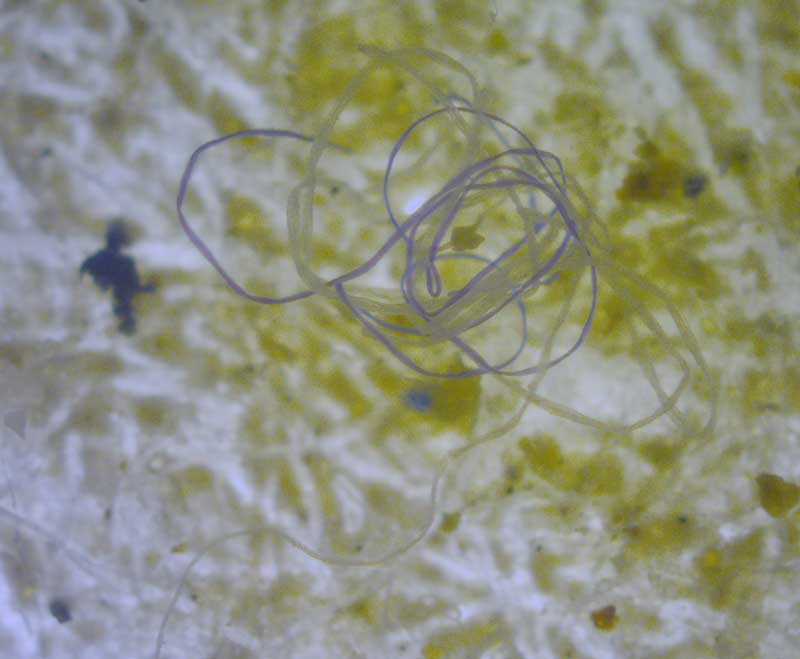
LAKE HURON—The outcry over microplastics in our lakes and waterways, particularly the Great Lakes, is gaining momentum with both an Ontario Liberal MPP and federal NDP MP putting forth actions to see their respective governments ban the use of microplastics in cosmetics and cleaning products. These plastics, so small, are finding their way through the wastewater system and into our waterways.
The Expositor first reported on the scourge of microplastics in our Great Lakes in December of 2012 following the report of Dr. Sherri Mason, a chemistry professor at the State University of New York at Fredonia, who found Lakes Superior, Huron and Erie to have high amounts of the tiny plastic pieces in all of the samples taken by her and her team.
A New Democrat motion put forth by MP Megan Leslie last week says microbeads “could have serious harmful effects, and therefore the government should take immediate measures to add microbeads to the list of toxic substances managed by the government under the Canadian Environmental Protection Act.”
“To protect our fresh water resources from an entirely man-made problem should be a no-brainer for all Parliamentarians to support,” said Algoma-Manitoulin-Kapuskasing MP Carol Hughes in a press release to the Expositor.
Ms. Hughes spoke to the motion, making an impassioned plea for MPs to consider the state of the Great Lakes for future generations.

“It is a matter of stating priorities and putting our common good ahead of the convenience these microbeads afford manufacturers of consumer goods,” said Ms. Hughes. “If we adopt this motion we will join other jurisdictions that have already legislated to ban microbeads or are currently seized with the issue.”
“Microbeads can already be found in high concentrations in the Great Lakes,” she continued. “The problem is most noticeable downstream from major cities and in the sediments of the St. Lawrence River.”
Ms. Hughes told Parliament that influential cosmetic companies are voluntarily taking steps to replace microbeads and that many jurisdictions are debating the problem while some have already banned them in a phase-out manner.
“By taking immediate action and listing microbeads as toxic under the EPA we could then move to regulate, phase out and eliminate the use of microbeads in products used or produced in Canada,” said Ms. Hughes. “This is especially important for our recreational fishing industry and the safety of fish and other aquatic species most affected by this plastic.”
The motion gained support from all parties, including Conservative MP for Bruce-Grey-Owen Sound, Larry Miller.
“I am in favour of any measure that the government can take to ensure the safety of the Great Lakes and indeed all Canadian waterways,” he said. “Research conducted by the University of Waterloo has shown that microbeads present a very real problem and are becoming more prevalent in the Great Lakes,” said Mr. Miller. “In much the same way the government is actively fighting the presence of Asian carp in the Great Lakes, there should be an expectation to decrease and eliminate the presence of this ‘man-made’ invasive species.”
Also late last month, Marie-France Lalonde, MPP for Ottawa-Orléans, introduced a bill to enact the Microbead Elimination and Monitoring Act, 2015. “This Private Members Bill serves to ensure industry and individuals in the province are mindful of the use of synthetic plastic microbeads in largely cosmetic products. It is time that we phase out microbeads and begin identifying alternatives,” a press release from her office states.
The Microbead Elimination and Monitoring Act calls for: the prohibition of the manufacture of microbeads and the addition of microbeads to cosmetics, soaps or similar products and the minister to ensure water samples from the Great Lakes are analyzed for the presence of microbeads and include these results in the next annual drinking water report.
“This bill complements other Ontario and Ministry of Environment and Climate Change Initiatives such as the Great Lakes Protection Act, in order to protect the safety of all Ontarians, our wildlife and our natural environment for generations to come,” the press release continues.
“The issue of the impact of microbeads is one that was brought to me by constituents soon after my election,” MPP Lalonde said. “This legislation is important in order to protect our drinking water, our health, marine diversity, and more. Considering other countries, other Great Lakes states, and many manufacturers have already committed to phasing out the use of microbeads, I believe it is time for Ontario to be the first province in Canada to take action.”
In the US, Illinois and New Jersey have banned the use of microplastics, which constitutes anything five millimetres and under. Ms. Lalonde’s bill names microplastics as anything one millimetre and under. Michigan, Minnesota, New York and Ohio (all Great Lakes states) are currently working to ban the use of microbeads.
Manufacturers such as Unilever, Colgate-Palmolive and Procter & Gamble have promised to cut microbeads from their products in the next few years.
The Conservative government also announced last month that Environment Canada is studying the dangers posed to wildlife and the environment by microplastics. The findings of the study will determine a federal-provincial action plan on the tiny beads, Colin Carrie, the parliamentary secretary to Environment Minister Leona Aglukkaq, told reporters.
The Expositor spoke with Michael Bondi, asking whether his family, which owns the Little Current, Manitowaning and Mindemoya Guardian Pharmacies and Island Foodland, have had discussion about removing items with microbeads from their shelves. He said they had not, but if people want these products, it is in their best interest to keep them stocked.
“It’s really up to the manufacturers to take the lead on this,” he said. “We try and do our best, but in the end, there’s not much a retail pharmacy can do. We’ve already taken such a big hit in cuts, moving stuff off of the shelves is not in our best interest. In due time, I’m sure these items will be replaced (with environmentally friendly materials).”
The 2011 study by Dr. Mason came thanks to a $10,000 grant from The Burning River Foundation (an organization whose mission is to maintain and improve regional freshwater resources), plus training and tools from the 5 Gyres Institute (which seeks to eliminate plastic pollution in the oceans). Dr. Mason was able to take 21 samples from three of the Great Lakes in July of 2011, eight of which came from Lake Huron. The samples taken closest to Manitoulin came from near St. Joseph Island, she noted, and these also showed the largest amounts of plastics in Lake Huron—up to 5,000 pieces of plastic per square kilometre.
Lake Superior had the smallest number of plastics in a sample, Lake Huron had more and Lake Erie had the most—up to 600,000 plastic particles per square kilometre in two of this lake’s samples.
“The majority of what we found are microplastics,” Dr. Mason said during a 2012 interview with The Expositor. The net used to take the samples can catch particles ranging from 0.333 microns to one millimetre.
Scientists who study microplastics in the ocean have also found that plastics attract very dangerous chemicals as cling-ons, such as DDT, PCBs and nonylphenols—all harmful to human health.





